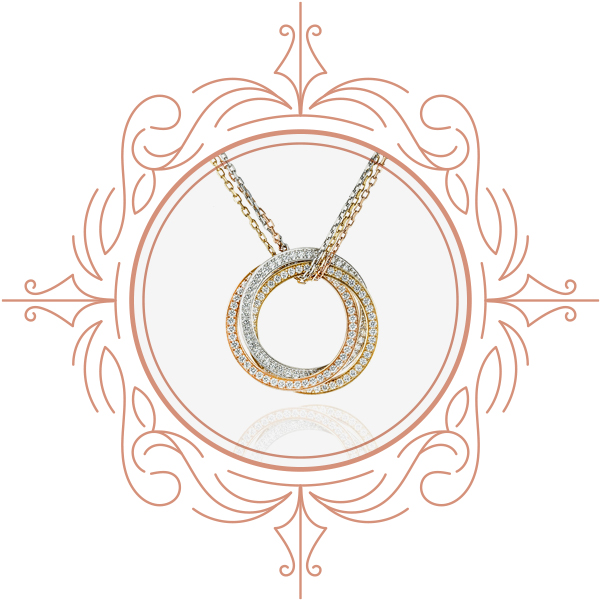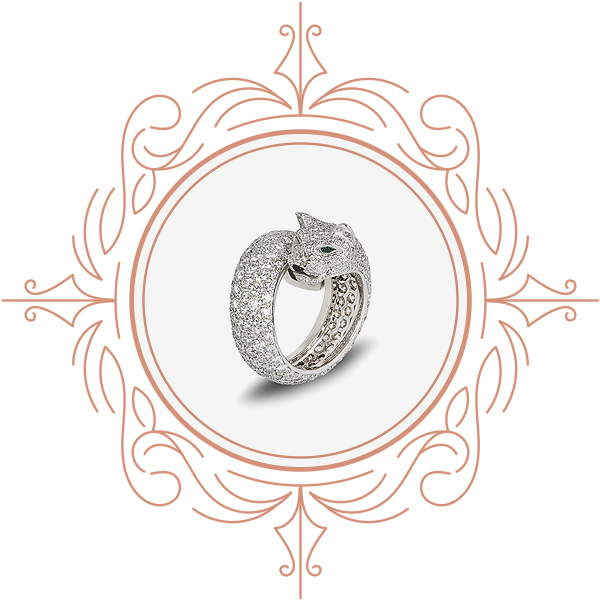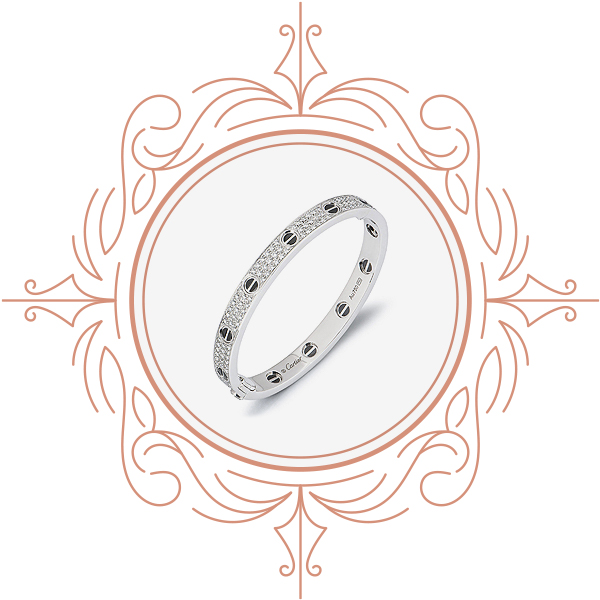
Cartier & Their Everlasting Connection With The Royal Family
Cartier's name is synonymous with luxury and elegance, a reputation it has maintained through its enduring connection with the British royal family. Known as the "Jeweller of Kings, King of Jewellers," Cartier has long been the go-to choice for regal adornments, crafting exquisite pieces that embody both opulence and tradition. This relationship dates back to the early 20th century when Cartier first captured the attention of royal patrons.
Over the years, the brand has created iconic pieces for various royal events, from coronations to weddings. Let’s explore the fascinating history of Cartier's royal ties, showcasing the significant commissions and ongoing patronage that continue to define its legacy.

The Genesis of Cartier's Royal Ties

Cartier's Rise to Prominence in the Early 20th Century (Early 1900s)
At the turn of the 20th century, Cartier had already established itself as a premier jeweller, renowned for its exquisite craftsmanship and innovative designs. However, it was the growing relationships with European royalty that truly cemented Cartier’s place in the annals of luxury.
Louis Cartier, the grandson of the founder, played a pivotal role in elevating the brand’s status, with his keen eye for design and his ambition to cater to the tastes of the elite.
Initial Royal Commissions and Endorsements (1902-1911)
One of the earliest significant endorsements came from King Edward VII of the United Kingdom. Enamoured by Cartier's artistry, Edward VII famously proclaimed Cartier as:
"the jeweller of kings and the king of jewellers."
This royal endorsement was not merely honorary; it translated into substantial commissions, such as the creation of 27 tiaras for Edward VII’s coronation in 1902. This monumental order firmly placed Cartier in the royal spotlight and showcased its ability to meet the highest standards of luxury and craftsmanship.
Expanding Royal Patronage and Influence (1911-1937)
The success of these early commissions set the stage for Cartier’s expanding influence among European aristocracy. Cartier received numerous commissions from various royal families, including those of Spain, Portugal, and Russia. These relationships helped to solidify Cartier’s reputation as the go-to jeweller for royalty.
Notable Endorsements and Legacy (1930s-Present)
Throughout the 1930s and beyond, Cartier's clientele continued to grow, encompassing numerous royals and dignitaries. The brand's creations spanned a wide range of jewellery, from tiaras and necklaces to brooches and ceremonial regalia.
These initial periods of royal patronage laid the groundwork for Cartier's enduring relationship with royalty, setting a precedent for the exquisite craftsmanship and luxurious designs that continue to define the brand today.

Iconic Royal Commissions by Cartier
There are a variety of stunning royal commissions that set Cartier as a significant jewellery supplier for royal families across the globe. Here are some of the most iconic and well-known commissions:
The Halo Tiara
One of the most renowned pieces created by Cartier is the Halo Tiara, commissioned by King George VI in 1936 for his wife, Queen Elizabeth, later known as the Queen Mother. This exquisite piece, crafted in platinum, features a series of graduated scroll motifs set with 739 brilliant-cut diamonds and 149 baton diamonds.
The central motif consists of large, fan-like scrolls, which gradually decrease in size towards the ends of the piece, creating a harmonious balance. The intricate arrangement of diamonds not only maximises brilliance and sparkle but also adds depth and dimension to the design.
The Halo Tiara became globally famous when it was worn by Kate Middleton, Duchess of Cambridge, at her wedding to Prince William in 2011. This high-profile appearance showcased the tiara’s timeless appeal.
The Collier Résille
The Collier Résille, commissioned by Queen Alexandra in 1904, is a glittering diamond necklace with detachable emerald and ruby pendants.
This remarkable piece was later inherited by Queen Mary in 1926. She was known to have worn the Collier Résille without any coloured gemstone drops, as seen in her 1926 portrait and her 80th birthday portrait. This versatility showcases Cartier’s innovative design, allowing the piece to be adapted for various occasions by simply removing or adding the gemstone drops.
The Duchess of Windsor's Panther Bracelet
The Panther Bracelet was a bespoke piece commissioned for Wallis Simpson, the Duchess of Windsor, in 1952. Wallis Simpson, an American socialite, became a central figure in a constitutional crisis when King Edward VIII abdicated the throne to marry her, due to her being twice-divorced. Their marriage led to Edward becoming the Duke of Windsor, with Wallis being styled as the Duchess of Windsor.
This striking bracelet features a fully articulated panther crafted from platinum and set with diamonds and onyx, with emeralds for the eyes. The panther motif symbolised the Duchess's bold and unconventional style, a reflection of her distinctive fashion sense and love for avant-garde jewellery. The piece exemplifies Cartier's ability to create unique, personalised designs, blending elegance with a daring edge. The Panther Bracelet remains one of Cartier's most iconic creations, embodying the brand's mastery in crafting luxurious and innovative jewellery.
The Greville Peardrop Earrings
The Queen Mother inherited several extraordinary Cartier jewels from Dame Margaret Helen Greville, including the Greville Peardrop earrings crafted by Cartier in 1938.
These earrings are made of platinum and diamond, featuring six individual diamonds: two triangular diamond studs, from which are suspended two emerald-cut diamonds and two enormous 20 carat pear-shaped drops. They were inherited by Queen Elizabeth II in 2002 and remain a testament to Cartier’s exceptional craftsmanship.
The Emerald Engagement Ring
In 1936, the Duke of Windsor, then Prince of Wales, proposed to Wallis Simpson with a dazzling 19.77-carat emerald ring made by Cartier. This ring played a central role in the constitutional crisis that led to his abdication.
The couple continued to be devoted clients of Cartier, with the Duke of Windsor purchasing other notable pieces, including a flamingo brooch for Simpson in 1940 and a Panthère brooch featuring a 152.35-carat cabochon sapphire in 1949.
The Queen Mother’s Lily Brooch
The Queen Mother’s Lily Brooch is an extraordinary piece commissioned by King George VI in 1938. Created by Cartier, this brooch is nearly seven inches long and features a design of a lily stem with two open flowers and six pear-shaped diamond buds, crafted from a combination of existing royal diamonds and additional stones.
First worn during a 1939 state visit to the United States, the brooch became a staple in the Queen Mother’s collection, often seen at significant events. It was later inherited by Queen Elizabeth II and continues to be a symbol of royal elegance.

The Role of Cartier in Royal Milestones

Cartier's exquisite creations have been a staple in the royal family's most significant events, marking milestones that are steeped in history and tradition. From grand weddings to solemn coronations and stately functions, Cartier jewellery has adorned royalty, symbolising not just opulence but the continuity and heritage of the monarchy.
Cartier at Royal Weddings
Royal weddings have always been events of grand spectacle, and Cartier jewellery has often played a central role in these momentous occasions. For instance, the Halo Tiara, worn by Kate Middleton at her wedding to Prince William in 2011, exemplifies how Cartier pieces are chosen for their elegance and historical significance. This tiara, originally a gift from King George VI to Queen Elizabeth, the Queen Mother, symbolises the continuity of royal heritage and the passing down of treasured pieces through generations.
Cartier jewels also made an appearance during the wedding of the Duke and Duchess of Sussex. For the ceremony, Meghan donned a glistening Reflection de Cartier bracelet, made of brilliant and baguette-cut diamonds, later wearing a pair of diamond earrings from the same Cartier collection for the evening reception as well as Princess Diana’s emerald-cut aquamarine ring.
Similarly, when Wallis Simpson married Edward, Duke of Windsor, in 1937, her wedding ensemble included a dazzling 19.77-carat emerald ring made by Cartier. This piece highlighted her unique style and marked a significant moment in royal history, symbolising a break from tradition and the embrace of modernity. Cartier’s ability to blend tradition with contemporary elegance makes its pieces ideal for such significant life events.
Cartier at Coronations
Cartier's association with royal coronations underscores its reputation as the jeweller of kings. A notable example is the creation of 27 tiaras for the coronation of King Edward VII in 1902, which marked Cartier’s first major royal commission. These tiaras were not just accessories; they were symbols of the monarchy's splendour and the craftsmanship that Cartier represented.
Another significant instance is Princess Margaret's choice to wear the Cartier Halo Tiara at the coronation of her sister, Queen Elizabeth II, in 1953. This tiara, purchased by the Duke of York (later King George VI) in 1936, became a favourite of Princess Margaret, who wore it numerous times before the coronation. The tiara's small profile and platinum setting made it comfortable and suitable for such a grand occasion.
In addition to the tiara, Princess Margaret wore a Cartier Diamond Rose Brooch during the coronation, a piece made in 1938. This brooch, shaped like a rose in reference to Margaret's middle name, added a touch of personal significance and royal heritage to her ensemble.
The coronation of King George V in 1911 also saw the use of a Cartier creation. Queen Alexandra gifted her son a Cartier desk clock with bold purple and green enamel, reflecting both her personal style and the vibrant influences of the time. This piece symbolised the blend of personal and public life, highlighting the intimate bonds within the royal family.

Cartier's Influence on Royal Jewellery Trends

Setting Standards for Elegance and Sophistication
Cartier has long been at the forefront of jewellery design, setting standards for elegance and sophistication within royal circles. The brand's innovative approach and exquisite craftsmanship have consistently attracted royalty, who seek pieces that reflect both tradition and contemporary style. Cartier’s influence is evident in the recurring themes and designs that have become synonymous with royal elegance.
One of Cartier's most significant contributions to royal jewellery trends is its ability to merge traditional motifs with modern aesthetics. This approach ensures that the pieces are timeless yet relevant to the current era. The brand’s Art Deco designs from the 1920s and 1930s, characterised by geometric shapes and bold lines, became immensely popular among royals, setting a new standard for elegance and influencing jewellery trends across Europe.
Timeless Designs Passed Down Through Generations
Cartier’s creations are timeless masterpieces often passed down through generations within royal families. Princess Beatrice, for example, wore a stunning vintage Cartier diamond tiara at her wedding in 2020. This piece, originally created in the 1930s, was loaned to her by Queen Elizabeth II, demonstrating how Cartier’s creations are cherished and preserved as part of the royal family’s legacy.
Innovation and Adaptability
Cartier’s ability to innovate while maintaining its heritage has significantly influenced royal jewellery trends. The introduction of the panther motif, notably in the Panther Bracelet commissioned by the Duchess of Windsor in the 1950s, showcased Cartier’s bold, avant-garde designs that still adhered to royal sophistication. This motif has become iconic, symbolising both elegance and daring spirit.
Another example of Cartier's versatility is the Cartier Ballon Bleu watch, frequently worn by the Duchess of Cambridge, Kate Middleton. This watch blends modern luxury with classic elegance, showcasing Cartier's continued appeal among royals.
Moreover, Cartier's adaptability ensures its continued relevance. The bespoke pieces created for various royal events demonstrate Cartier’s commitment to blending contemporary design elements with traditional craftsmanship. This adaptability extends beyond royal circles, impacting global jewellery trends and inspiring other jewellers and fashion trends.
Embracing Tradition and Modernity
Cartier balances tradition with modernity, incorporating historical elements while embracing contemporary styles and techniques. This blend ensures Cartier pieces appeal to royals who wish to honour their heritage while staying relevant in the modern age. For example, the tiaras crafted for significant royal events reflect the monarchy’s commitment to both tradition and progress. Cartier’s ability to encapsulate this balance is a key reason its pieces remain favoured by royalty.

Explore Our Cartier Jewellery

Explore the exquisite collection of pre-owned Cartier jewellery available at Rich Diamonds and bring a piece of this regal legacy into your own collection.
Browse Our Cartier Jewellery
Frequently Asked Questions
Does Cartier have a Royal Warrant?
Yes, Cartier holds a Royal Warrant, which recognises it as an official supplier of jewellery to the British royal family. For more information, you can visit the Royal Warrant Holders Association.
Which royals wear Cartier?
Many members of the royal family wear Cartier. Notable examples include the Duchess of Cambridge, Kate Middleton, who wore the Cartier Halo Tiara at her wedding and frequently sports the Cartier Ballon Bleu watch. Princess Beatrice wore a vintage Cartier diamond tiara at her wedding in 2020. Additionally, Meghan Markle, Duchess of Sussex, has been seen wearing various Cartier pieces, including the Cartier Reflection de Cartier bracelet.
What Cartier watch did Princess Diana wear?
Princess Diana wore the Cartier Tank watch, a classic and elegant timepiece that has become iconic through her association. This watch style has continued to be popular among royals, including Meghan Markle, Duchess of Sussex.
What is the most famous piece of Cartier jewellery worn by a royal?
One of the most famous pieces is the Halo Tiara, commissioned by King George VI for Queen Elizabeth, the Queen Mother, in 1936. This tiara gained international fame when it was worn by Kate Middleton at her wedding to Prince William in 2011.

